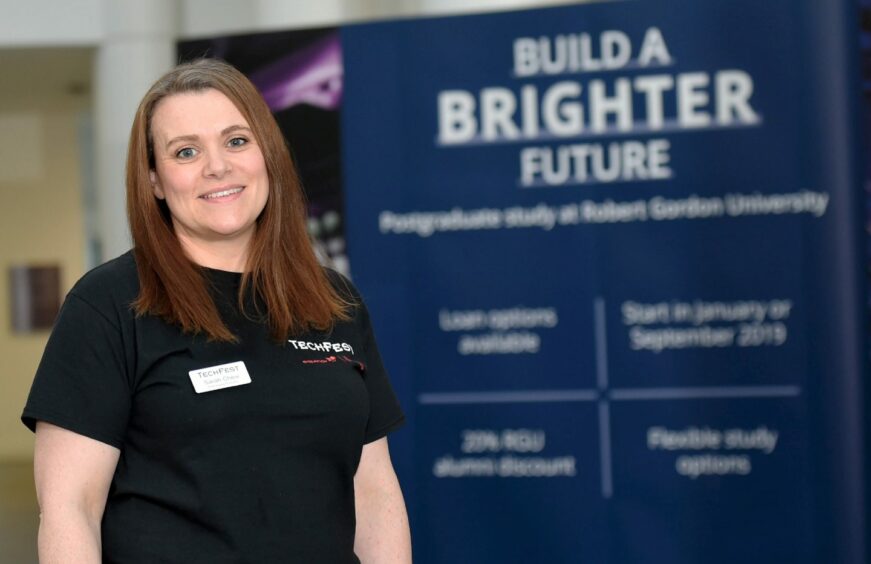There has been widespread adoption of remote technology by UK businesses during the pandemic.
Research by communications technology company Zoom found 82% of small and medium-sized enterprise employees used video conferencing last year – up from just 20% in 2019.
This technology was considered vital for firms to be able to keep operating after Covid-19 reached our shores.
Nearly 80% of the large UK businesses surveyed agreed their company could not have survived through the pandemic without video conferencing tools.
Video conferencing can have advantages over face-to-face meetings, though there can be drawbacks too.
There is no substitute for being face-to-face with businesses and partners when it comes to identifying opportunities for growth and developing projects.”
Jennifer Craw, chief executive, Opportunity North East.
One of the significant plus points is increased savings. Many companies have seen their staff travel costs shrink massively during the pandemic, as employees have been unable to attend conferences or meetings.
Another benefit can be in better staff productivity. More employees are working remotely these days – either from home, cafes or other locations outwith the office.
They can join video conferences from virtually anywhere at any time of day.
This type of meeting is also more accessible to employees with disabilities, or those based abroad.
On the downside, a big disadvantage of video conferencing is a lack of personal interaction. This can prevent new employees getting to properly know their colleagues.
Research shows the need to connect socially with others is as basic as our need for food, water and shelter.
University of California professor Matthew Lieberman wrote about this in his book Social: Why Our Brains Are Wired to Connect.
He said: “Being socially connected is our brain’s lifelong passion. It’s been baked into our operating system for tens of millions of years.”
Connectivity woes
Workers using video conferencing on home networks can also suffer from connectivity issues – leading to lagging video or audio, as well as dropped calls.
Security may also be a problem, highlighted by instances in the past of hackers disrupting meetings.
All types of organisations in Scotland had to turn to remote technology when the pandemic struck, as lockdowns and other restrictions meant face-to-face meetings were going to be off the agenda for some time.
After the first lockdown in 2020, private-sector economic development catalyst Opportunity North East (One) successfully moved all its programme and project activity online.
Microsoft Teams and Zoom became invaluable tools for the 30-strong team, allowing them to maintain pre-Covid levels of activity, launch programmes and develop new projects.
One is currently delivering its programmes through a blend of in-person and virtual activity.
Chief executive Jennifer Craw said: “There is no substitute for being face-to-face with businesses and partners when it comes to identifying opportunities for growth and developing projects.
“We have learned lessons working online and will continue to adopt what works best in the current hybrid environment to support businesses within groups or individually, engage partners or stakeholders, and deliver projects.”
TechFest, based in Aberdeen, thoroughly explored its options to take its events online.
The educational charity usually fills the north-east with an array of in-person events that inspire people of all ages to be more actively involved in science, technology, engineering and mathematics (Stem).
Its annual three-week Festival of Stem normally attracts more than 25,000 visitors to Aberdeen.
With the onset of Covid-19, the organisation significantly adapted the way it operated.
We have overcome tough challenges, learned new skills and found benefits from an extremely-tough situation.”
Sarah Chew, managing director, TechFest.
Its first solely-digital festival was held in 2020, using Zoom and YouTube, and the format was replicated for this year’s event, which ended at the start of this month.
Despite having to learn all the software, set up a completely new programme and ensure all presenters were comfortable and trained with the set-up, TechFest adapted and rose to each challenge.
Going digital led to people from all over the UK as well as in South America, the US, Cyprus, France, Lithuania, Netherlands, and Slovakia tuning in.
Some aspects here to stay
The organisation has kept digital aspects in its event operations, as well as for teamwork and collaboration.
Managing director Sarah Chew said: “TechFest activities are inclusive and, following last year’s success, we wanted to put on another festival which captured the interest of the public but still made them feel safe in the comfort of their own home.
“I’m incredibly proud of what the TechFest team has achieved over the last 20 months.
“We have overcome tough challenges, learned new skills and found benefits from an extremely-tough situation.”
Ms Chew added: “I look forward to adopting a hybrid approach and continuing to use platforms like Zoom and YouTube, so our audience can choose the format that suits them – allowing us to reach as many people as possible.
“We will continue to use video conferencing as a way of collaborating.
“It has offered the team greater flexibility with their location and work-life balance, so it is here to stay.”
Meanwhile, one north-east organisation had to embrace video conferencing for the first time to allow it to keep at least some of its activities going during Covid-19.
Moray Coast U3A, which runs a variety of groups for members, was founded 10 years ago.
Committee member and past chairwoman Joan Coverley said: “Video conferencing has been a boon for Moray Coast U3A.
“It is especially good for our small groups who know each other well already, like our committee.
Video-call meetings ‘more productive’
“The committee was able to conduct more, shorter and I think probably more productive meetings than before, but that was built on the experience of a team already knowing and trusting each other.”
Most Moray Coast U3A activities stopped during the worst of the pandemic, but some have now resumed – including walking, table tennis, canasta, petanque, current affairs and short tennis – and a new group has been started for general discussions.
Mrs Coverley added the French conversation group had become “hybrid”.
She explained: “Pre-pandemic, it used to meet in people’s homes and so numbers were inevitably limited.
“That group moved online and enabled more people, including myself, to join it.
“Now at two meetings per month, one is held face-to-face in a public space which still puts limits on numbers, and the other is by video conferencing – which is great for someone like me who doesn’t want to drive in the dark in winter.”
‘It certainly isn’t a panacea’
Mrs Coverley said video conferencing had been fine for some members and activities.
But she added: “It certainly isn’t a panacea, and face-to-face is really important for forming relationships and friendships.
“I think we will certainly continue to use it for committee meetings and for hybrid groups but, at the end of the day, we are retired or semi-retired people and the social aspect of what we do is intrinsic to what we’re all about. We like to have a laugh.
“However, video conferencing can open up opportunities which a local U3A cannot provide.
“For example, U3A Online Across Scotland has been offering a series of four lectures about the Scottish colourists, delivered by an art historian.
“The great thing about the U3A is it is a UK-wide movement full of people with ideas and they’ve not been slow to adapt.
“So, when you go onto the U3A national website you will see that there are opportunities to join groups which are operating across Britain, because the technology is there, and there is also help to develop your skills to access it.”







